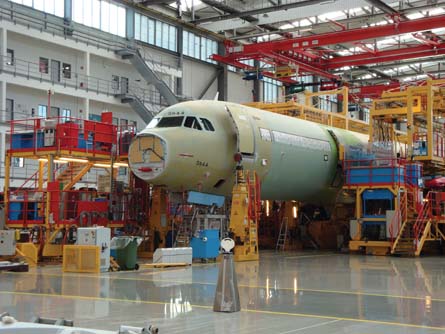Aircraft manufacturers are hiking their production rates over the coming years, but Scott Hamilton questions whether the ramp-up be too much, too soon, depressing aircraft values?
Airbus and Boeing are undertaking major increases in A320 and 737 family production rates, and even more boosts in their single-aisle output are being evaluated. It is a similar story for the widebodies. Boeing, with a large backlog of 787s and beset by lengthy delays and an inability to offer near- to mid-term delivery positions to new customers, is considering taking the monthly rate to 17. Seattle will also lift rates for the 777 to 8.3 a month - or 100 a year - in part to help 787 customers facing delays.
Over in Toulouse, Airbus A330 production is rising to cash in on the 787 delays, as well as to address demand for retirements and growth. Higher rates are being studied.
Adding to the mix is the rate of the emerging competitors in the 100- to 200-seat market and the rates at Embraer at the low end of this segment. Based on the Airbus and Boeing predictions in their own 20-year forecasts, these rates outstrip demand by a wide margin.
|
|
|---|
© Max Kingsley-Jones |
Airbus previously unveiled plans to take A320 production to 40 a month and is considering pushing this to 42 or 44. Boeing is moving to 38 a month for its 737 and Boeing Commercial Airplanes chief executive Jim Albaugh told an investors' meeting that 42 is being mulled. Airline Business affiliate Commercial Aviation Online reports that an even higher rate of 50 a month is being studied.
Airbus, in its latest Global Market Forecast, sees the need for 17,900 single-aisle aircraft over 20 years, including replacements and growth. This is an average of 895 aircraft per year, or 74.5 per month. Boeing's single-aisle forecast through 2029 predicts 21,160 airplanes, or 1,058 a year, which is 88 a month.
The announced A320/737 rate hikes take total monthly production to 78 units. Including increases under discussion - to 42 for the A320 and 41 for the commercial 737 (another one would be for the 737-based military P-8A) - would rise to 83 a month. If Boeing moves to 50 a month, the combined Airbus and Boeing single-aisle total rises to 92 units.
These rates, if achieved, are likely to happen around 2016, just when China's Comac C919 and Russia's Irkut MS-21 are supposed to enter service. Bombardier's CSeries, in the 110-149 seat market, is due to debut in 2013-14. Embraer's 108- to 122-seat 190/195 family is already in production.
Even if the new entrants are on time with their entry into service, by the time they hit full production rate, Airbus and Boeing could boost their rates even higher.
In November, Nicole Piasecki, vice-president of Boeing Business Development & Strategic Integration, told employees that salesmen were saying: "'Just give me an airplane, I can sell it.' They feel very constrained right now because we can't offer airlines that are growing product, and we have to be able to solve our customers' growth requirements. That is why production rates are going to be a very, very important theme for us over the next few years."
JP Morgan's aerospace analyst team, commenting on the 777 rate increase, believes there will be an adjustment almost as soon as the rate is implemented. "Our analysis shows that Boeing has historically geared production to maintain three years of production in backlog. If 777 orders remain at 2010 levels, Boeing will drop below three years of production in backlog in 2012, which would suggest a rate cut in 2013 rather than an increase," JP Morgan wrote in a note. "We believe orders could be even weaker than this as our analysis of the top 150 airlines in the backlog indicates that the widebody backlogs at Airbus/Boeing are over-ordered. We see this move as an effort to push product ahead of what we think will be a refreshed 777 and likely delayed A350."
IS A PRICE WAR LOOMING?
The production and pricing power of Airbus and Boeing will be formidable against the new entrants, but will increased production pull down purchase prices and adversely affect future values? Flooding the markets with 737s and A320s to head off the new entrants, especially with output potentially outstripping the long-term demand cited in the airframers' 20-year forecasts, is the classic case of supply and demand. When supply outstrips demand, prices go down - and this has to have an adverse effect on residual values.
Airbus's tradition of maintaining level rates through downturns has sometimes drawn scathing criticism from appraisers.
Production rates and valuations charts do not tell the entire story about A320/737 values, however. That the 737-800 carries 12 more passengers in typical two-class configuration and has sole-source engine selection, compared with the current A320's dual source offering, are two key factors in the Boeing twinjet's higher residual values, according to some appraisers.
The debate over what effect Airbus's re-engined A320neo will have has not been factored into this scenario. The potential impact on residual values of Airbus delivering four different A320 engine options from 2016 has been positively frightening to some lessors and bankers.
Source: Airline Business

















